This post may contain affiliate links. If you make a purchase through a link, I may receive a small commission, at no cost to you. These commissions help keep this website up and running, and I thank you for your support. Read my full disclosure here.
After a long, cold British winter we were desperate to get some sunshine and vitamin D. After searching for destinations that would offer Easter sun, we settled on Lanzarote. Lanzarote is in the Spanish Canary Islands and located in the Atlantic Ocean just off the north coast of Africa. The seven main islands are (from largest to smallest in area) Tenerife, Fuerteventura, Gran Canaria, Lanzarote, La Palma, La Gomera and El Hierro.
I spent time researching each of the resort areas on the island to decide where to base ourselves. I ended up choosing Playa Blanca which is at the very southern end of the island. I chose this area because it’s considered more laid back that the busy party area of Puerto del Carmen and more traditional than the modern Costa Teguise. From Playa Blanca you can also take the ferry to visit Fuerteventura, but unfortunately, we didn’t get time.
You might think that the Canary Islands are named after the Canary bird, but they weren’t. There is actually some disagreement over the history of their name. The first theory is that the name was derived from the Latin name Canariae Insulae, meaning ‘Islands of the Dogs’, a name that was applied only to Gran Canaria because it contained a lot of large dogs. The islands’ coat of arms even depicts dogs. However, the second theory is that the original inhabitants of the island, Guanches, used to worship dogs, mummified them, and treated them generally as holy animals. The final theory is that the name came from the Nukkari Berber tribe living in the Moroccan Atlas, named in Roman sources as Canarii.
Lanzarote is a fascinating island because it is completely covered in volcanic rock due to the massive volcanic activity that occurred during the 1700’s. It is very similar to the volcanic landscape of Iceland, but with a much warmer climate. There are no trees. However, although it may appear barren, we saw lizards, shrews, many types of birds, plants, and colourful lichens that cover the rock formations. Some of you may be relieved to know that there are no snakes here. The ocean also offers great opportunities for snorkelling and diving.
Day 1
After setting off in the early hours of the morning, we arrived in Lanzarote airport about midday. We were keen to get our holiday started and were relieved to get through customs very quickly (as we don’t have EU passports, we usually have to line up for ages). We had planned to take the bus to Playa Blanca. It’s just over an hour’s drive from the airport and we were advised it would cost about €70 for a taxi, so we opted for the cheaper bus option at under €4 each. I’ve provided details of getting the bus around Lanzarote in the ‘Practical Tips’ section at the bottom of this post. If you are staying at a resort then most of them provide shuttle transfers.
Unfortunately, we did not know that the Thursday before Easter Friday is a public holiday in Spain, so the buses in Lanzarote were only running on their holiday schedule. I thought I had checked this out when planning the holiday, but this caught me completely unawares. We weren’t the only ones who found themselves waiting for the bus that day. We ended up having to wait two hours as the bus also ended up being late and then took ages to get everyone on board because by the time it turned up there was a large crowd waiting.
By the time we finally arrived in Playa Blanca we were starving, so headed out to eat. We ended up at Restaurante Bodegón las Tapas (Av. Marítima, 29, 35580 Playa Blanca, Las Palmas, Spain), a Spanish tapas restaurant. We chose their tasting menu and a bottle of local white wine, which was refreshingly light in the heat, and very easy drinking. The meal was delicious. Highlights for me included the selection of local goats cheese, the Spanish bread topped with a tomato based sauce, and the tiny battered baby squid. We also had the popular Canary Island dish with little potatoes called papas arrugadas that are boiled and served with red and green chilli sauces called mojo rojo and mojo verde. I personally didn’t love the potatoes, they were a bit bland, but I did enjoy the sauces.

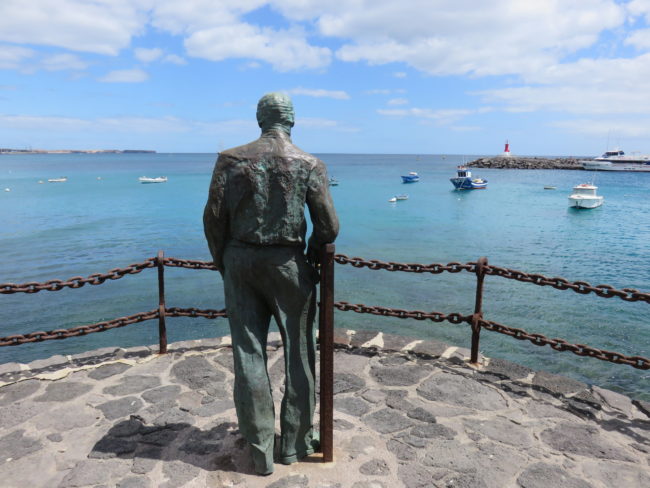
In the afternoon, we relaxed on the beach. There are two beaches in Playa Blanca. We were staying near the smaller one called Playa de Playa Blanca. However, as the tide was in, there wasn’t much room on the beach, so we walked down to the larger one called Playa Dorada Beach. We tucked ourselves against the rocky break to avoid the wind as Lanzarote gets rather blustery due to the famous Trade Winds.
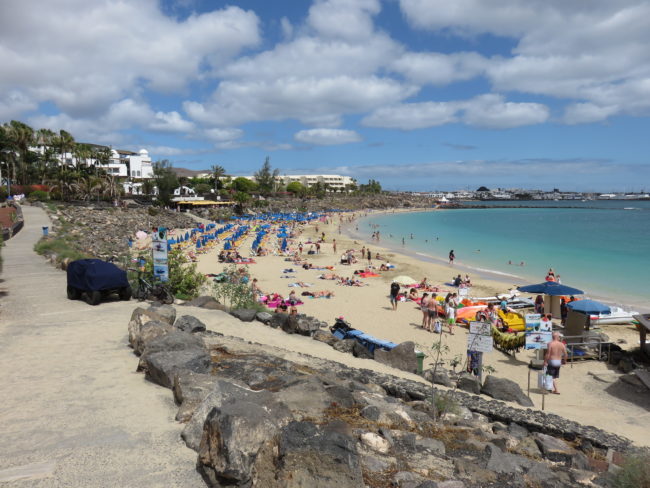
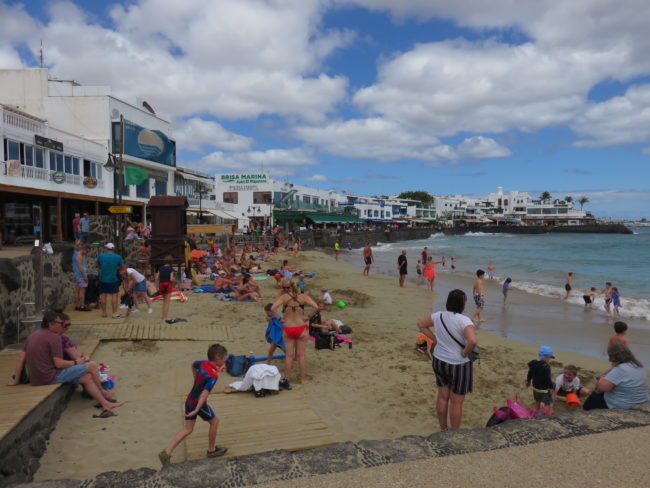
Day 2 – Wine Tour
The following day we enjoyed a wine tour with Wine Tours Lanzarote. Read my post on our Lanzarote wine experience here. This is an extreme environment in which to grow grape vines and I really enjoyed learning more about how they manage to achieve such amazing wine – and so cheap! Typical vineyards grow the vines espaliered in row, but here they grow each vine separately in its own deep pit. They are eye catching pops of green amongst the dramatic black volcanic landscape.

They also grow aloe vera here, and you will see it being sold everywhere in the form of beauty creams. The aloe vera gel is really good on sunburn. I like to keep it in the fridge so it’s lovely and cool on hot skin.
In the afternoon, we relaxed on the beach again. That evening we prepared ourselves a meal of local wine and goat’s cheese (which you can just buy at the local Spar supermarket), some freshly baked bread, sausages, and onions.
Day 3 – El Papagayo – Marina Rubicón Markets
On our third day we headed out to El Papagayo, which is the name of the region where the seven beaches Las Playas de Papagayo are located. They are situated on the headland underneath the Ajaches Mountains in the far south of Lanzarote. There are several ways you can get there. We initially thought that we could take a water taxi, but then discovered that they only drop you off on the beach from May to November (we were there in April). However, I was also told that they no longer allow the boats to drop tourists off there anymore – so I really don’t know if this is an option any longer.
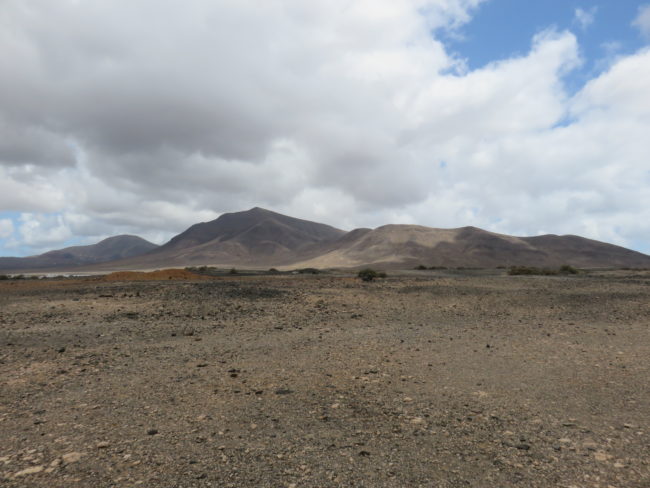
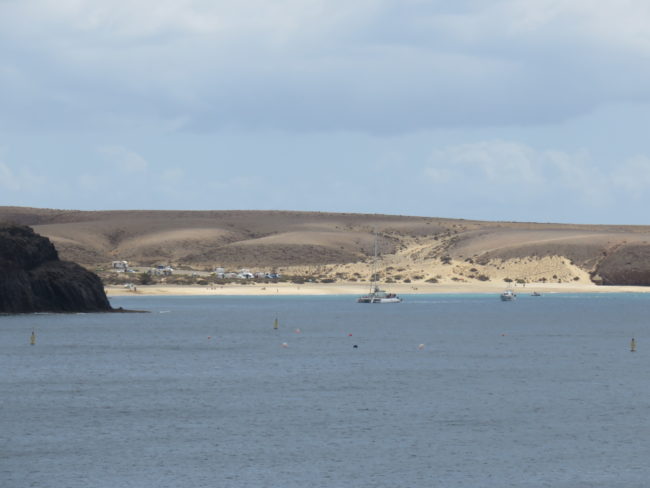
The options available to us were:
- By car: The roads to the car parks are rather rough. Some car rental companies won’t let you take their cars on these roads. As you drive around the LZ-705, lookout for the dirt road marked by a small cabin and a gate. You will have to pay a small entrance fee.
- By bus: You can take the local bus number 30 from Playa Blanca and get off at the last stop and walk about 20 minutes along the path to get to the first beach.
- Walk: We decided to walk to El Papagayo. We were staying near the marina in Playa Blanca so it took us about an hour and a half (a bit longer on the way there as we were stopping to look at things) to get to the first beach.
We enjoyed the walk which was very pleasant along the esplanade. It’s mostly flat and gave us the opportunity to see more of Playa Blanca. When we got to Marina Rubicón the local markets were in full swing, so we spent some time looking around. They are held on Wednesdays and Saturdays from 9am-2pm.
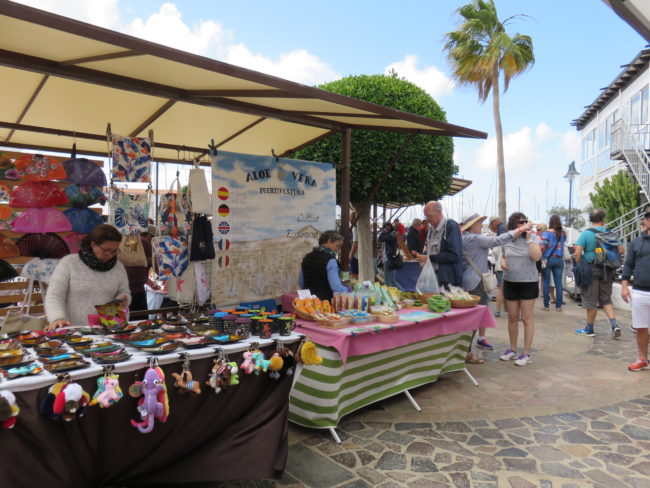
Just pass Marina Rubicón, we came upon Castillo de las Coloradas, a defensive structure that was built in the 18th century to defend against pirates. It is locked so you can’t go in, but there is a nice headland you can walk out onto for views of the coastline. There are also toilets here.

This end of Playa Blanca is mostly just large resort apartments. It is quite quiet and not much going on. There aren’t any nice beaches along this part of the esplanade, so I was glad that we were staying at the other end, which is more lively and has all the restaurants, bars and beaches.
Eventually, the path came to an end and we had to scrabble up a rocky hillside to get up to the walking paths (see image below). There are lots of obvious signposted paths around this area and there were lots of people out and about hiking, running and mountain biking. You can also walk up the mountain range of Los Ajaches that overlooks the coastline. If we had had more time I would have liked to have done this.
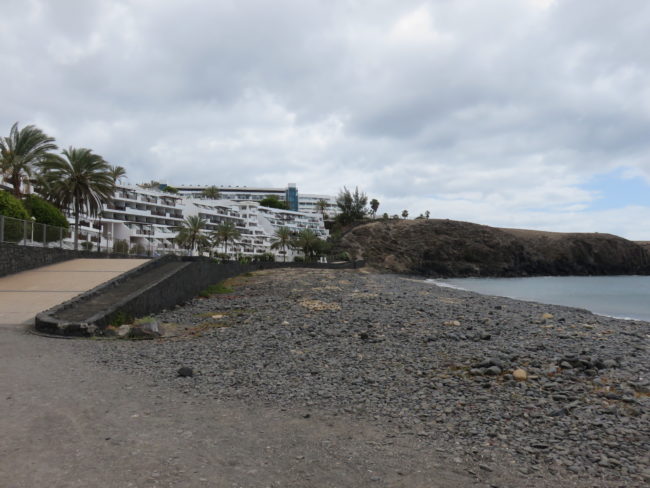
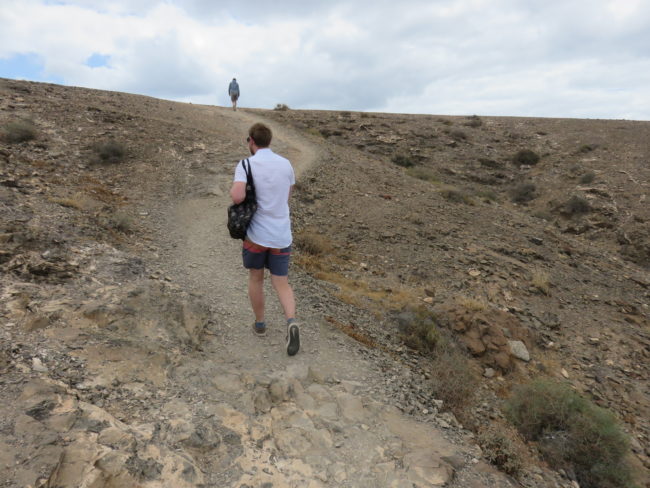
We walked on to the first beach and stopped there for a while to relax. Unfortunately, it was quite windy whilst we were there, but people had created little rock wall shelters on the edge of the beach, so we lay down in one of these. The water was too cold for swimming, but it was a nice place to relax.


Make sure you bring lots of water and food with you because apart from Chiringuito Restaurant which is located between Playa de Papagayo and Playa del Poz, there is no other services. If you aren’t a customer, you have to pay to use the toilets, which brings me to my next point… there are no toilets! So don’t be surprised when you see bits of toilet paper caught amongst the rocks and spiky shrubs.
After a while we moved on to the next beach, which is a nude beach, so if this makes you uncomfortable, then keep walking. What I loved about these beaches is how much quieter they are than the main beaches in Playa Blanca. There was plenty of room for everyone to have some personal space, which is rare in Europe.
In the afternoon, we did some more walking around the cliff top paths before heading back to Playa Blanca. El Papagayo really is a lovely spot and worth a visit. The paths are not particularly difficult, so don’t let that put you off.

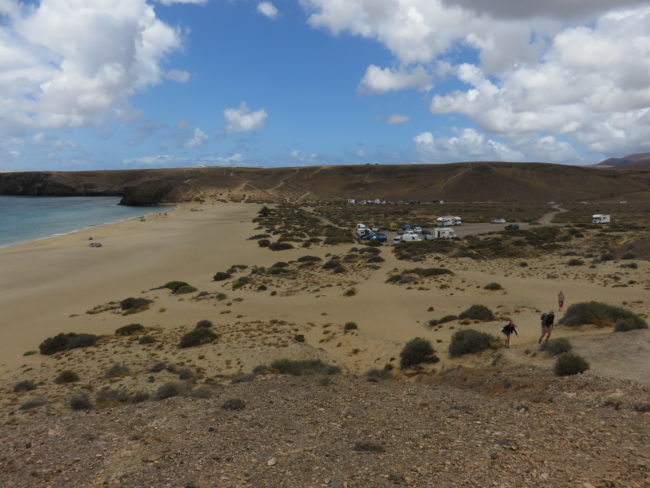
Tips
- Bring food and plenty of water with you as other than the one restaurant located between Playa de Papagayo and Playa del Poz, there is no other services.
- The paths are gravely and rocky in some places, sandy in others. Make sure you wear some comfortable walking shoes.
Day 4: Timanfaya National Park – El Golfo – Los Hervideros – Salt Mines
We were keen to get out to explore the countryside, so we hired a car for the day. The roads here are excellent and well-sealed. They were very quiet compared to where we live, so we didn’t find it stressful driving around. There really aren’t many roads, so it’s difficult to get lost, but there are plenty of roundabouts.
If you are considering hiring a car, then I can recommend CICAR (Estación Marítima de Playa Blanca, 35570 Playa Blanca, Las Palmas, Spain), which is located in the Playa Blanca marina. I have not been sponsored or paid to endorse this company, but I feel it is worth mentioning and recommending because I have never come across a rental company that makes it so easy and stress-free to rent a car. Firstly, we easily booked a car online the day before. Their website was straightforward and easy to use. Secondly, I loved that they had no hidden or extra fees – everything was included in the price, no need to worry about lots of different confusing insurances and at the end of booking, discovering that the cost is actually double of what you thought it was going to be. I also loved that they allowed a second driver for FREE. For those with kids, I believe they offer baby seats for free as well. Why can’t all car hire places operate like this?
When we turned up to collect our hire car, we were just handed the keys and asked to bring the car back with the same level of fuel. They didn’t try to hard sell us on an upgrade and we didn’t have to worry about checking the car over and comparing it with the damage on the documents, because we were fully covered as part of their standard rental. This also made returning the car a breeze – we just dropped the keys off.
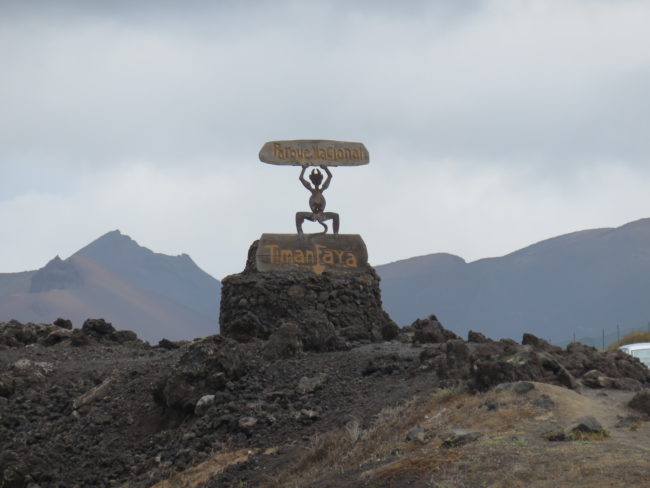
We started out early in the morning, as we wanted to avoid the tour buses. We first drove to Timanfaya National Park, which was only a short drive from Playa Blanca and easily accessible from the LZ-67. Driving along the road, we saw the camel ride and museum parking on our left, and just a bit further up the road we found the park entrance. You can’t miss it as there is a big sign and a booth where you purchase your entry ticket from.
From there, we followed the road up to the car park, where the parking attendants directed us into a parking spot. As soon as we hopped out of the car, the friendly attendants directed us up to the buses where a tour was about to depart. The buses leave from outside the large onsite restaurant, El Diablo. You can’t miss it because it’s the only building here and beside the parking. We showed our ticket to the bus driver (the tour is included in your entry fee) and jumped aboard.

Unfortunately, you can’t go for a walk around this park as the rocks are very fragile, so in order to preserve them they don’t have walking paths. The only way to explore the park in foot is by booking a guided ranger walk, which we didn’t have time to do since we wanted to see other parts of the island. However, you do get to see a lot of the park on the bus tour that takes about 30-40 minutes.

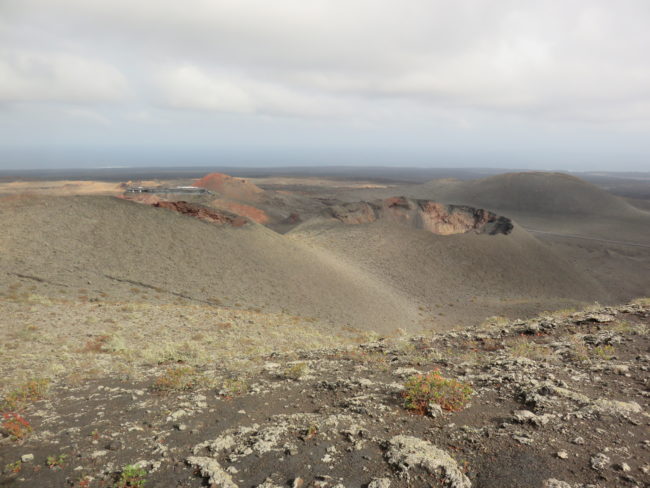
The bus tour took us around the park and its main sights. As we drove around, they played an audio tour guide in a range of languages which provided some interesting history about the area and what happened when the volcanoes were erupting. The views were spectacular. The dramatic rock formations and the colours were stunning. I’m not sure if I can really recommend a particular side of the bus to sit on, as both sides seemed to get good views, however, we sat on the opposite side to the driver and it felt like we got good views. It was a bit tricky to take good photos because of the reflection of the glass and the movement of the bus. However, it does stop at the popular sights to allow people to have a good look.
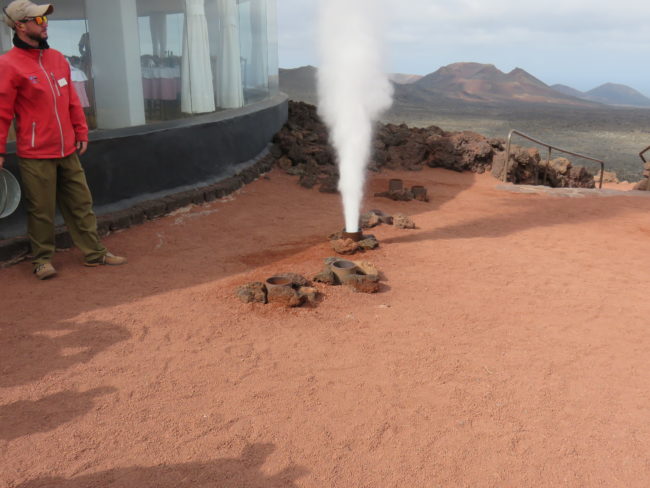

As we got off the bus, we were guided over to the demonstrations they put on to show how hot the geothermal heat under the ground is. They set some dry grass on fire and then they pour some water down a hole which causes it to whoosh up in a water explosion. Quite entertaining. There was an amazing big hot pit by the restaurant where they slow cooked their meat on racks. While we were there, they were roasting some marinated chicken which smelled amazing. If it had been closer to lunch time we would have stayed around to eat some.
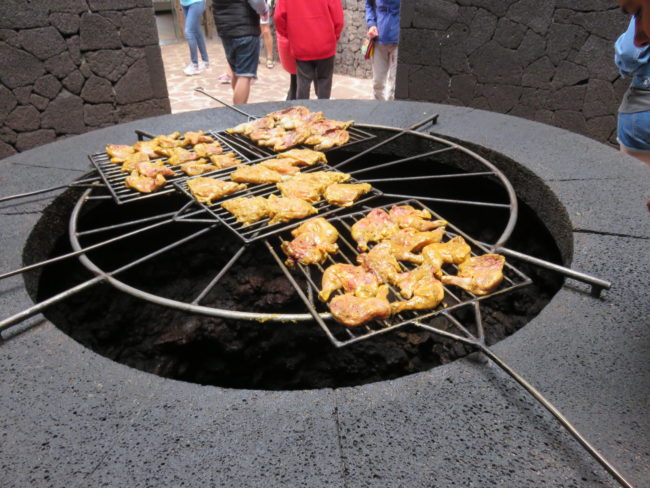
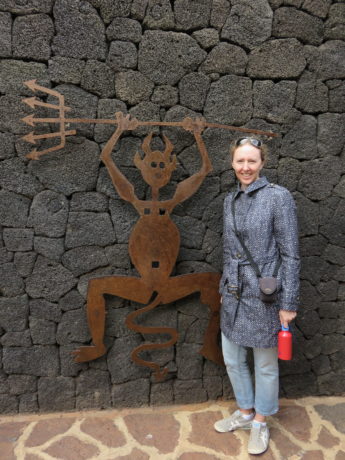
There is not much else to see here since you’re not allowed to go for a walk, so we got back in the car and drove up to Timanfaya Visitor Centre, which is a short drive up the LZ-67 road from the park entrance. I found the visitor centre to be a tad boring, but at least it was free. I wouldn’t bother with the ‘volcanic explosion experience’ as even the kids found that disappointing, but there are some interesting information boards about the plants and animal life, and you do learn a bit more about the history of this place. The best part for me was the boardwalk that you can access from the very back entrance of the centre. The walk allows you to get a closer look at the volcanic rock.
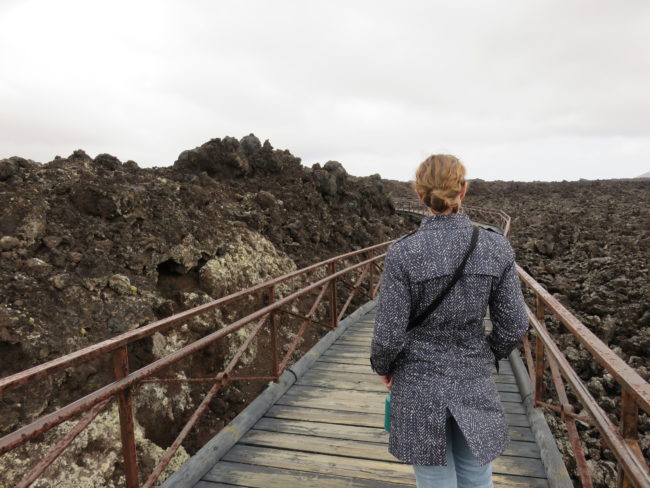
There is no safe place to pull over as you drive through the national park, as they really don’t want you walking out over the fragile rock formations. However, on our way back down the LZ-67, we found a place to pull over and park and go for a walk. It is beside the roundabout that takes you onto the LZ-67 and on the edge of the park so you get to walk amongst the volcanic rock. We spent some time walking along the path and enjoying the dramatic surroundings. There was a large flock of finches that seemed to follow us which were really cute.
We drove into the coastal village of El Golfo. There is a large car park on your left as you first enter the village, and there is also another one if you continue to drive through the main street to the very end of the road. It was relatively quiet when we arrived. Beside the first car park is El Charco de los Clicos or the ‘Green Lagoon’, the crater of an extinct volcano which is filled with green water caused by algae. We took the short path that led us to the viewing point.
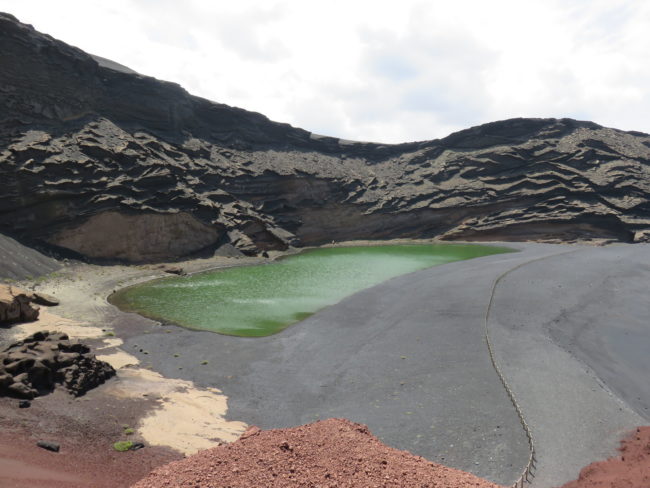
El Golfo is known for its many seafood restaurants, so we had plans to enjoy a seafood lunch. Little did we know that Easter Sunday is a popular day for the Spanish to have a family lunch, so the popular restaurants were booked out, but the Casa Rafa Restaurante De Mar managed to squeeze us in. We really enjoyed their razor clams and some very tasty and tender octopus. For the main we had the fish platter, but I didn’t enjoy this as much as most of it was battered and I found the fish too salty. They served us a complimentary after dinner drink that was some kind of coffee flavoured spirit. I don’t like coffee, so hubby had both of them. Needless to say I ended up doing the driving after lunch.
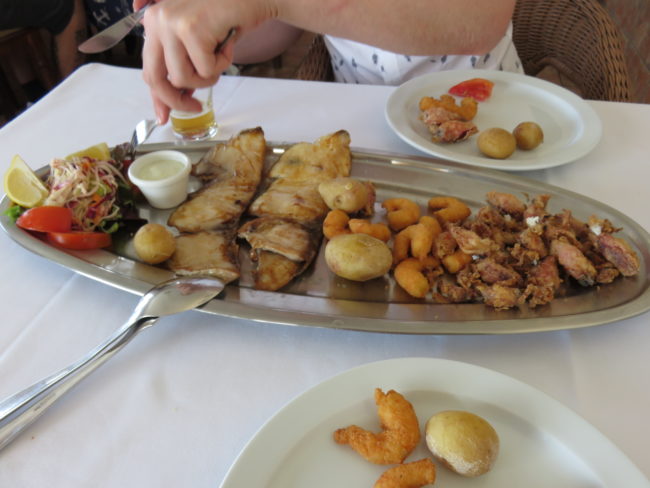
We were very full after lunch, so took a walk through El Grofo. The beach here is black and they have some adorable tiny beach cottages on the shore. We walked out along the coastal path that starts at the end of the main road. It’s part of a long path you can do as part of a multi-day trek.
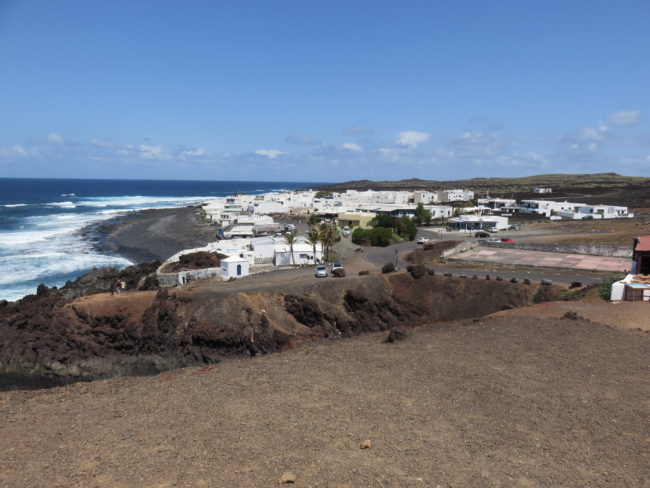
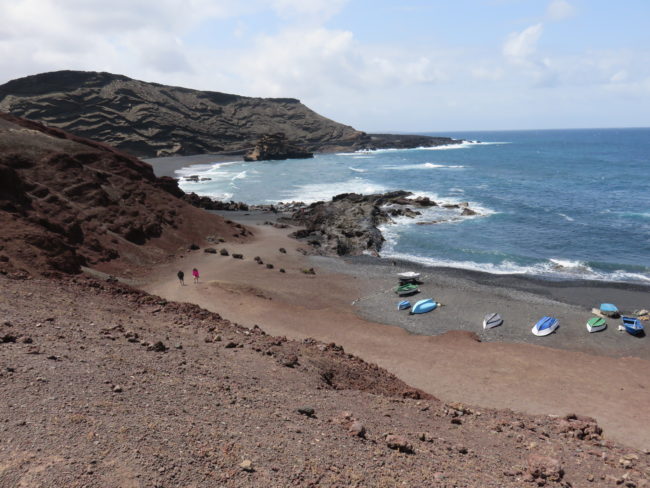
In the afternoon, we drove along the coast to Los Hervideros, the volcanic sea caves. The road LZ-703 takes in some amazing coastal views, and there are plenty of bays to pull over and enjoy them. The large car park at Los Hervideros is free and there is a sealed walking path that threads you through the volcanic rocks. I enjoyed watching the waves come crashing through the blowholes, worn away from years of erosion.
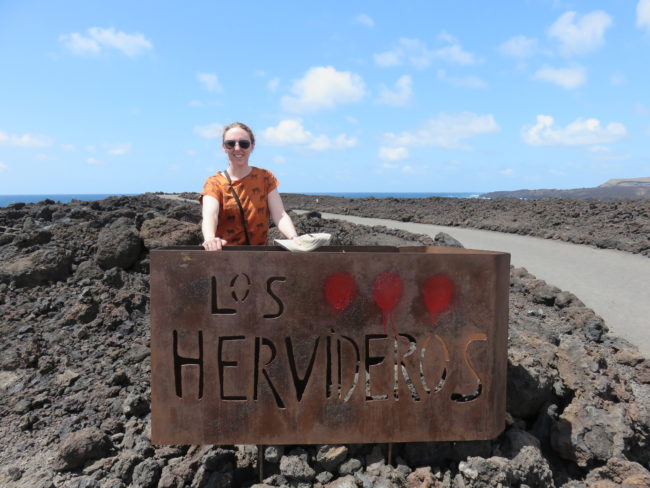

We continued along the LZ-703 to visit the salt pans of Salina De Janubio and Mirador Salinas de Janubio. There is a large free car park, but be careful as the entrance is rather rugged. The coastline here is beautiful with black sand which reminded us of the black beaches of Iceland. We spent about an hour walking around the old salt pan area which is now a nature reserve. It was very peaceful wandering around the old salt pans and looking at the remnants of the old mine. There are a large variety of birds and we also saw a few shrews and lizards darting between the scrub.

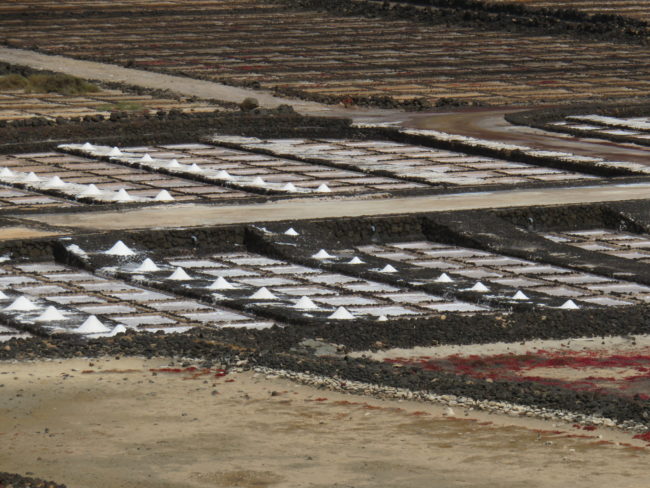
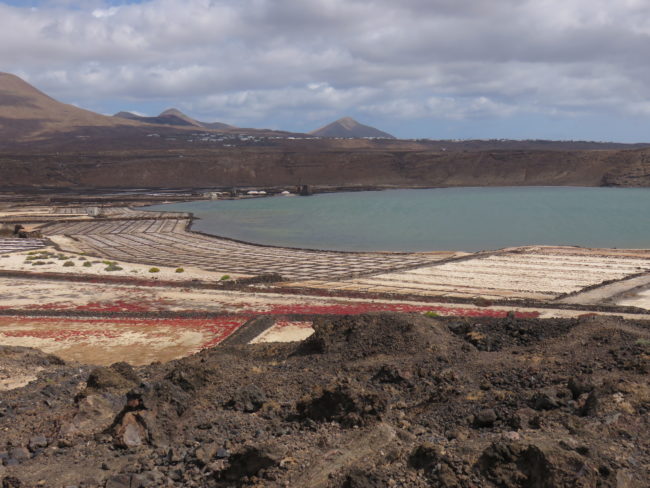
This is still an active saltworks here, Salinas de Janubio. The entrance to it is further along the LZ-703. It’s open Monday to Saturday, so it was closed when we drove past on Sunday, but there is a good viewing point beside the entrance.
In the evening, we relaxed on the beach and then enjoyed some local wines with our new friends we had met on our wine tour.
Day 5: Marina Rubicón
On our final day, we planned to just chill. We headed down to explore Marina Rubicón. It’s an interesting resort to visit as it has an interesting layout and design. There is a good selection of shops selling resort-style clothing and also a range of restaurants and cafe’s that service the large number of apartments and hotels at this end of Playa Blanca. As I mentioned earlier, they also hold local markets here on Wednesdays and Saturdays.
I enjoyed the ponds and bridge/jetty over the water where lots of fish gather as people feed them bread. If you enjoy checking out boats, then there are plenty of nice ones in the marina. There is also a public pool here. You have to pay to use it, but if your accommodation doesn’t have one and you prefer a pool over the ocean, then this is a nice spot to swim.

We had lunch at the Bikers Beach Club (Centro Comercial Papagayo, Avenida Maritima, 35580 Playa Blanca, Las Palmas) where the food was rather average food, but it’s perfectly situated right on the beach, so the views were lovely. However, the drinks are good, and the pours very generous. I enjoyed their Sangria.
We spent our final evening relaxing on the beach. Then for dinner, we went on a recommendation from the new friends we met on our wine tour. We went to La Chalanita (Av. Marítima, 73, 35580 Playa Blanca, Las Palmas) which is an upstairs restaurant on the waterfront. We enjoyed our final bottle of Lanzarote wine, and I was excited to see their world-famous local smoked salmon on the menu. Yes, you heard me correctly, they smoke salmon here. Apparently, they ship it in from Norway and it’s smoked by a family-run business, La Ahumaderia de Uga. It was delicious, it melted in my mouth and had a delicate flavour. For the main, we both enjoyed the chateaubriand (steak) with roast potatoes. It was a very pleasant end to our holiday which also happened to be our wedding anniversary.
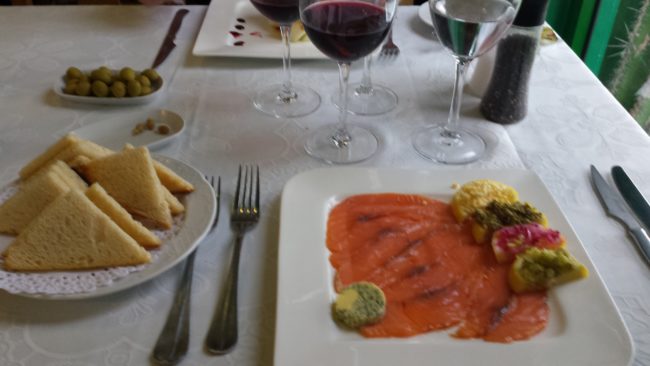
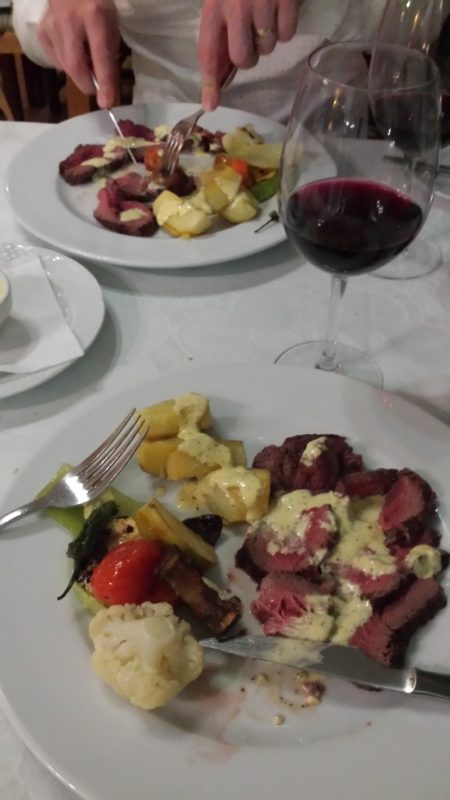
Practical Tips for Visiting Lanzarote
- How long should I visit Lanzarote for? Despite its small size, there is a surprising amount to do in Lanzarote. We didn’t get to see it all during our five day stay, however, that’s probably because we wanted to balance adventure with some sun worshipping on the beach.
- Getting to Lanzarote
- Airport: Lanzarote’s international airport is located in Arrecife which is located on the central western coast of the island. I was expecting quite a small airport, but it was quite a decent size and had restaurants and a few shops.
- Ferry: There are ferries that run from mainland Spain, and from the neighbouring islands including Fuerteventura, Gran Canaria, La Palma and Tenerife.
- Getting to and from Lanzarote airport
- Bus: You can take the number 61 bus from Arrecife Airport to Playa Blanca. The 61 stops at both Terminal 1 and Terminal 2 at the airport and also calls at Matagorda, Puerto del Carmen, Puerto Calero and Yaiza en route to the resort. Once in Playa Blanca the 61 stops at the main bus station and then at the harbour/ferry port. The estimated journey time is around 1hr 15 minutes, but that can vary greatly depending on passenger numbers. The 61 operates from 07.30 until 21.30 on Mondays to Fridays and 08.00 to 20.00 on weekends and festival days, with services running every half an hour. See the Lanzarote bus timetable here. Make sure you have small change on you as the maximum note they accept is €10.
- Taxi: Taxi’s are relatively cheap in Lanzarote, however, if you are heading to Playa Blanca like we were, expect to pay around €70 to get a taxi from the airport.
- Resort shuttle: If you are staying in one of the hotel resorts, they may have an airport transfer service using their hotel minivans. Make sure you arrange this with your accommodation before departing.
- Where to find a water fountain at Lanzarote airport
- We are trying really hard not to buy water and instead make use of our reusable drink bottles, so I was very happy to discover that they had a water fountain at the airport. We were in departures in terminal 1 and found the water fountain near the first bathroom on the right as you come out of security (which by the way is the busiest bathroom, so keep walking a bit further along to the next one).
- Getting around Lanzarote:
- Bus: There are buses that go between the resort towns, however, they don’t tend to go to the tourist spots outside of the resorts. In that case you will either need to hire a car or go on a tour. See the Lanzarote bus timetable here. Make sure you have small change on you as the maximum note they accept is €10.
- Hire car: We found it reasonably priced to hire a car for the day. As I mentioned in my article, I recommend the hire company CICAR (Estación Marítima de Playa Blanca, 35570 Playa Blanca, Las Palmas, Spain).
- Private tour: There are plenty of companies offering day tours of the main sites. Check out the 10 best Lanzarote tours here.
- Getting around Playa Blanca:
- Bus: The main bus station/terminus in Playa Blanca is located on the Avenida Playa Blanca close to the main roundabout at the entrance to the resort from the LZ2. The number 30 bus runs within Playa Blanca itself and operates daily from 06.30 until 22.00. The service starts at the bus station and stops at most points around Playa Blanca, including the harbour/ferry port and the popular beaches of Playa Dorada and Playa Flamingo. During the summer months there is a little tourist road train that tours around the sites of the town.
- Taxi: Taxi’s are relatively cheaply priced and they were in abundance.
- Tourist Information Centre in Playa Blanca:
- Oficina de Turismo de Playa Blanca, Calle Don Jaime Quesada El Maestro, 3, 35580 Playa Blanca, Las Palmas.

- Language: Spanish. Although a lot of English-speaking tourists visit Lanzarote so we found that everyone spoke excellent English. However, I encourage you to try a little Spanish.
- Yes = Sí (SEE)
- No = No (NOH)
- Please = Por favor (POHR fah-BOHR)
- Thank you = Gracias (GRAH-syahs)
- Hello = Hola (OH-lah)
- Where is the toilet? Dónde está el baño? (DOHN-deh ehss-TAH EHL BAH-nyoh?)
- Currency: Euro. A lot of shops and cafe’s only take cash, so make sure you have some cash on you. There were plenty of ATM’s.
- Electricity: The electrical current is 220-240 volts, 50-60 Hz. Wall outlets take the European two round prong plugs. However, you are better off purchasing a worldwide adaptor of electronics with you, then I would recommend purchasing a couple of these adaptors.
- Driving: In Spain, they drive on the right hand side of the road with speed signs in kilometres per hour (km). The speed limit in the National park is 60km, but it’s 90km on the main highway. The roads are reasonably quiet and the roads are well maintained.
- Fuel: Compared to the UK, we found the fuel reasonably priced.
- Navigating: We used Google’s free Offline Maps. Google Offline Maps allows you to access free maps for navigating that can be used offline i.e. you don’t need WIFI, data, or roaming to be able to use them. Follow my detailed guide on how to use Google’s Offline Maps.
- Using your phone as a GPS will drain your battery quickly, so use a portable battery charger which you can use to charge your phone and any other USB chargeable devices.
- If you prefer a paper map, then purchase a Lanzarote road map before you go. At least it’s reliable and won’t run out of battery or malfunction like the electronic options!
- Where to print boarding passes in Playa Blanca: If you are flying with the ridiculous Ryanair who likes to charge you a fee to check in more than a few days before your flight, and you need to print your boarding pass because you have an international passport, then you can print them at:
- Locutorio Mudo Latino Internet Cafe – Calle el Correíllo, 69, 35580 Playa Blanca, Las Palmas, Spain
- The Irish Anvil Bar – C. C. Punta Limones, L.31, 35580 Playa Blanca, Las Palmas, Spain
- Lockers in Playa Blanca: I noticed there was some lockers available to use at the local Spar (Calle Limones, 6, 35580 Playa Blanca, Las Palmas, Spain) if you need one.
- Sunscreen: For some reason sunscreen is really expensive in Lanzarote, so make sure you bring plenty with you.

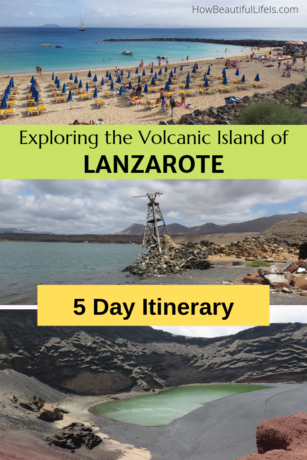
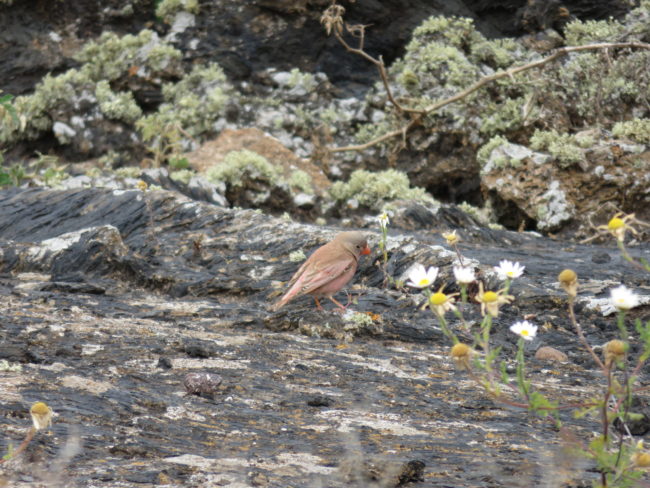

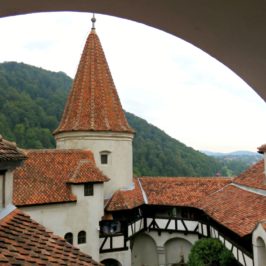
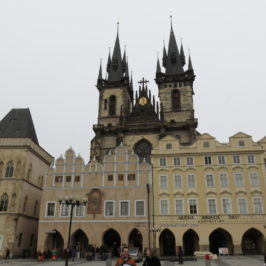


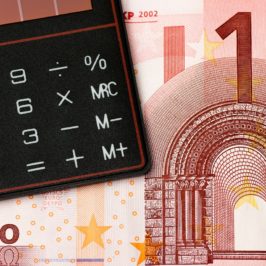
Leave a Reply